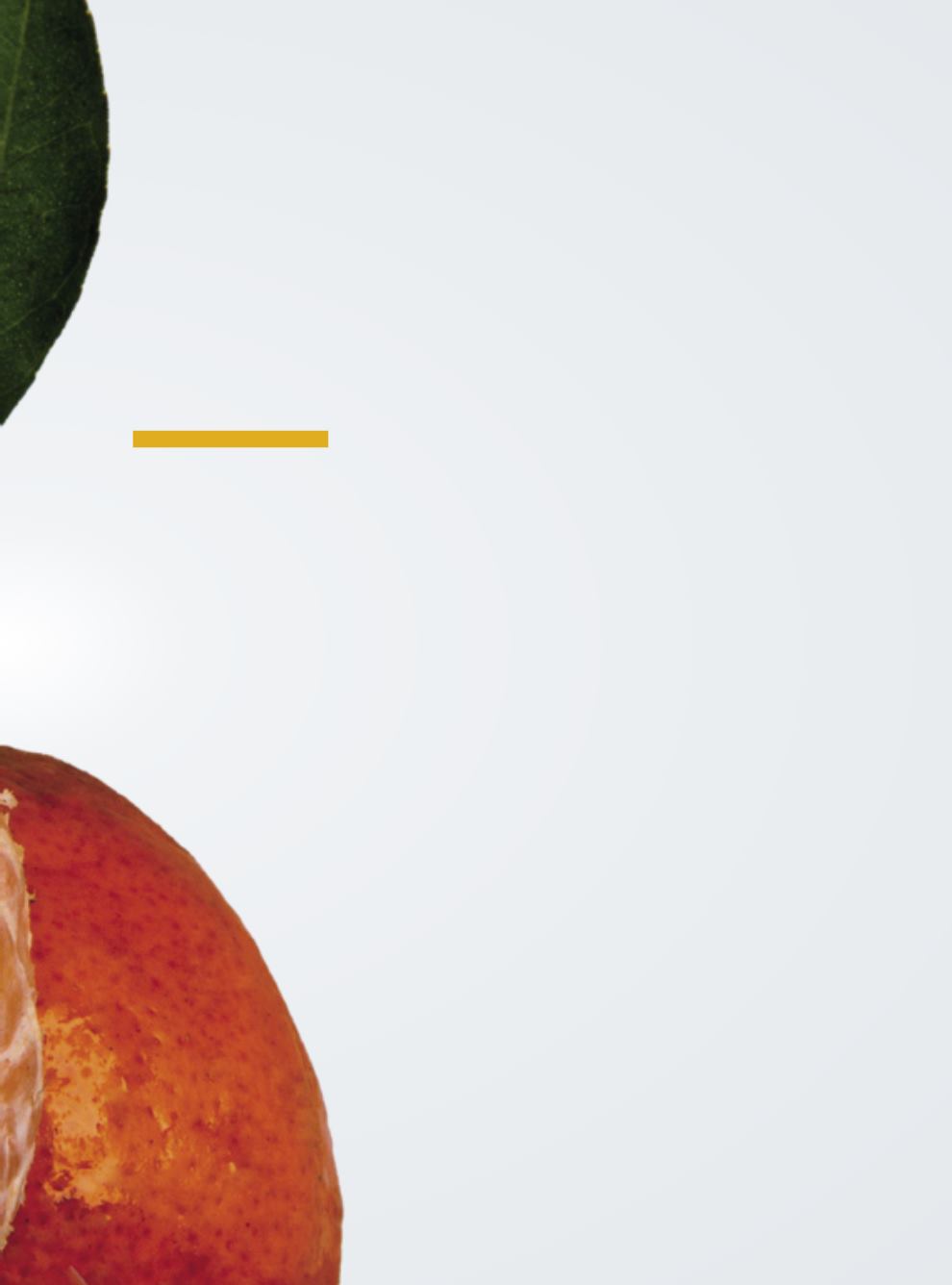
Inor Ag. Assmann
51
The tangerine – a name that is associat-
ed with its Arabic origin, also referred to as
“orange from Tangier”, coastal city and trade
center located in the far north of Morocco,
in the African continent – it is a cousin of
the orange, but behaves like other temper-
ate zone fruit. That is, its cultivation requires
much care from the producer and nutrients
in higher amounts and of better quality.
This production profile is viewed as
one of the factors that limit the perfor-
mance of this crop in Brazil. According to
researcher Orlando Passos, from Embrapa
Cassava and Fruit Farming, in Cruz das Al-
mas (BA), Brazil boasts a big expansion ca-
pacity in this type of cultivation. “We have
demand and area available for its develop-
ment. This is what really matters. Of all cit-
rus fruit, no other fruit is fitter for fresh
consumption than the tangerine. Current-
ly, we are importing this fruit, particularly
from Spain and Uruguay”, he notes.
Latest available data on the national
production date back to 2014, in a survey
conducted by the Brazilian Institute of Ge-
ography and Statistics (IBGE). According
to this survey, which is the best reference
in the present scenario, the Southeast ac-
counts for 57.92% of the national produc-
tion, with about 560 thousand tons, culti-
vated in an area of upwards of 21 thousand
hectares. Productivity, of 26 tons per hect-
are, is much higher than in the South, for
example, where 14 tons are harvested per
hectare, on average. In all, Brazil produces
960 thousand tons of tangerines per grow-
ing season, in an area of approximately 50
thousand hectares.
Passos points out that the quality of the
tangerine is directly linked to two factors:
altitude and latitude. “It is a crop that re-
quires special weather conditions. High al-
titudes are responsible for the color of the
fruit. The longer the hours of cold temper-
atures, the better. That is why, some high
altitude regions, like in Santa Catarina,
Paraná and Rio Grande do Sul, the fruits
are of excellent quality, as well as in the re-
gion known as Chapada Diamantina”, he
emphasizes. The management of the trees,
more delicate than orange trees, requires
thinning out, trimming and a definite
number of trees per area. The tree is also
very susceptible to fungi outbreaks, which
requires impeccable treatment if produc-
tion quality is to be achieved.
The Ponkan variety is the flagship in
the domestic market, accounting for about
50% of all sales. It is followed by other va-
rieties, known as Montenegrina (produced
in the region of Montenegro, in Rio Grande
do Sul), of a late cycle, very common in the
southern region, and there is also a variety
called Murgott. Specialists agree that the big-
gest bottleneck is the post-harvest period in
the national tangerine business. As it is ex-
tremely perishable, the tangerine is easily
damaged at processing, transportation and
packaging, which does not assure attractive
fruits on the supermarket shelves.
With particular traits
in all the stages
frommanagement to
consumption, tangerines
are citrus fruits
adjusted for fresh
consumption
Highly
different


